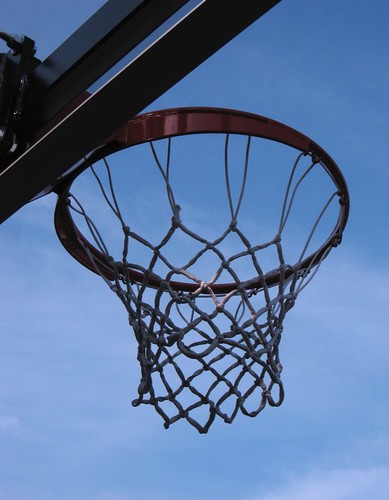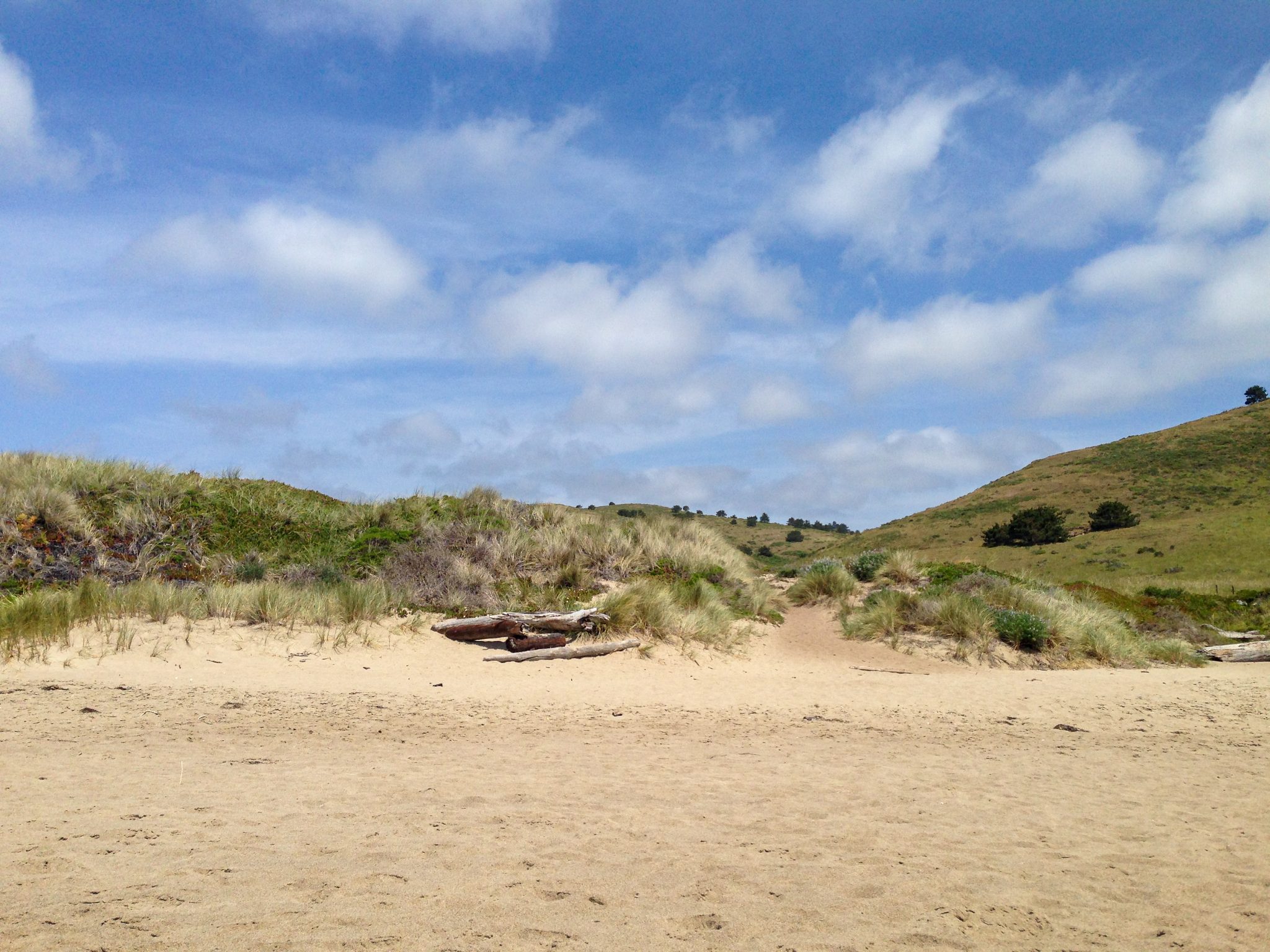
The art world mourns the passing of John McQueen, a singular visionary whose life and work redefined the boundaries of what is traditionally considered art. Dying at 82 on July 26, 2025, near his home in Saratoga Springs, New York, Mr. McQueen was not merely an artist; he was a pioneer who elevated humble materials like burrs, bark, and vines into profound sculptural statements, challenging conventional notions of craft and fine art. His ingenious forms, often crafted from nature’s scraps, left an indelible mark on contemporary basketry and beyond.
From his early days as an auto mechanic to his later years as an acclaimed artist, McQueen possessed an unwavering commitment to his unique artistic path. The American Craft Council, in a statement after his death, justly praised his transformative contribution, noting that he “redefined the field of contemporary basketry.” His practice was deeply intertwined with his environment, demonstrating an intimate connection to the natural world that imbued his creations with a timeless resonance.
This article embarks on an in-depth journey through the life and groundbreaking work of John McQueen. We will explore the pivotal moments that shaped his artistic philosophy, the innovative techniques he employed, and the profound conceptual depths embedded within his seemingly simple natural forms. Join us as we celebrate the legacy of an artist who proved that the most extraordinary art can emerge from the most unexpected materials and the most unconventional paths.

1. **John McQueen’s Unconventional Beginnings: From Mechanic to Artist**John David McQueen’s journey into the art world was anything but conventional, beginning far from the established galleries and studios. Born on January 21, 1943, in Oakland, Illinois, his early life involved a significant move to Fort Lauderdale, Florida, at the age of 10. There, alongside his three brothers, he learned the practical skills of working on small aircraft with his father, Hubert Franklin McQueen, an airplane mechanic. This early exposure to stitching canvas onto wooden-framed wings provided a foundational, hands-on understanding of construction and material manipulation that would subtly influence his later artistic endeavors.
His collegiate years were marked by a youthful curiosity that led him to Florida State University in Tallahassee, where he famously shared a roommate with Jim Morrison, the future frontman of The Doors. He later transferred to Indiana University Bloomington for his sophomore year, though he left school in 1966 after being drafted into the Army. His military service further refined his practical skills, as he was tasked with sewing uniforms and painting stripes on helmets on bases in Utah and Washington—experiences that, while seemingly mundane, echoed his earlier mechanical and textile-related activities.
Following his military service, McQueen pursued formal education in sculpture at the University of South Florida in Tampa, earning a Bachelor of Arts degree in 1971. It was after graduation, when he moved to Albuquerque with his girlfriend, Jessie Shefrin, who was studying printmaking, that his artistic inclinations truly began to manifest in unusual forms. In Albuquerque, he initially experimented with adobe and sod, even famously training grass to grow upside down using a metal armature and a grow light, a piece he found particularly amusing because he “liked that he had to water his sculpture.” These early, quirky explorations showcased a nascent fascination with natural materials and a playful, unconventional approach to art-making.

2. **The Transformative Encounter: A Pueblo Artisan and the Genesis of Basketry**A pivotal moment in John McQueen’s artistic evolution occurred during his time in Albuquerque, a serendipitous encounter at a state fair that profoundly redirected his creative path. While attending the fair, Mr. McQueen observed a Pueblo artisan engaged in the intricate process of constructing a basket. What struck him most was the artisan’s method: weaving the basket from the inside out, sitting within the developing structure itself. This direct, immersive approach to creation ignited a deep fascination within McQueen, drawing his attention to the rich and sophisticated basket-making traditions of the local Indigenous people.
This observation was more than just an interesting sight; it was an epiphany that shifted his focus entirely from his earlier experiments with adobe and sod. The immediate allure of basketry, with its historical depth and potential for innovative forms, captivated him. Before long, Mr. McQueen had “ditched the adobe and sod” and immersed himself in studying the baskets he saw around him, eager to replicate and understand their construction. His initial attempts, by his own admission, “wasn’t very good.”
However, McQueen was never one to be deterred by initial failures. His characteristic perseverance drove him to master the craft. This newfound passion for basketry, combined with his desire for further artistic development, led him to enroll in the textiles program at the Tyler School of Art and Architecture at Temple University in Philadelphia. There, he pursued and successfully earned a master’s degree in fine arts, dedicating himself to formalizing his burgeoning interest in fiber art and basketry, setting the stage for his groundbreaking contributions to the field.

3. **Formalizing a Radical Vision: Art Education and the Ascendance of Fiber Art**John McQueen’s enrollment in the textiles program at the Tyler School of Art and Architecture at Temple University marked a crucial period of growth and formalization for his distinctive artistic vision. While his initial self-taught forays into basketry in Albuquerque had been raw and experimental, his time at Tyler provided the academic rigor and critical environment necessary to refine his techniques and conceptual framework. It was here that he earned his Master of Fine Arts, solidifying his commitment to fiber arts as his primary medium.
This era, the early 1970s, was particularly fertile ground for fiber art, which was experiencing a significant ascendancy in the art world. Traditional crafts, including basket-making, were being “reimagined” by artists who sought to push beyond functional limitations and explore new expressive potentials. This burgeoning movement provided a receptive context for McQueen’s innovative approach, allowing his work to quickly stand out within a field already characterized by experimentation.
Instead, McQueen embarked on a path of radical invention, developing “his own patterns and techniques” that diverged sharply from conventional basketry. He began producing truly “strange biomorphic and anthropomorphic forms,” figures that seemed to possess an organic life of their own, often imbued with a sense of playful surrealism. This period of formal study, combined with the progressive atmosphere of the fiber art movement, empowered McQueen to forge a unique artistic language that would eventually redefine an entire genre.
4. **Redefining Contemporary Basketry: Beyond Functionality**John McQueen’s legacy is inextricably linked to his profound redefinition of contemporary basketry, transforming a traditional craft into a potent medium for nonfunctional sculpture and conceptual exploration. The American Craft Council, in acknowledging his passing, lauded his monumental impact, stating that he “redefined the field of contemporary basketry to embrace nonfunctional sculpture, exploring concepts of containment and space.” This statement encapsulates the core of his artistic mission: to liberate basketry from its utilitarian constraints and elevate it to the realm of fine art.
McQueen harbored a distinct perspective on his artistic identity, often preferring to be called a “basket maker rather than a sculptor.” He felt that “sculpture… was freighted with too many preconceptions,” implying that the term carried a weight of historical expectations that could limit artistic freedom. In contrast, he found liberation in the overlooked status of basketry in modern Western culture. As he explained, “The advantage of having baskets ignored by modern Western culture is that baskets are allowed to be whatever I want. The rules haven’t been determined.” This philosophy allowed him unparalleled freedom to experiment without the burden of established artistic conventions.
Despite his insistence on non-functionality, McQueen’s works often retained a subtle, humorous nod to their traditional roots. He once told The Star-Ledger in 1992, “I let it be that they have implied function. They do hold air, you know!” This playful acknowledgment underscored the tension and dialogue between utility and pure aesthetic expression present in his work. His art consistently challenged viewers to reconsider what a basket could be, expanding its definition from a container of goods to a vessel of ideas, exploring themes of presence, absence, and the invisible architecture of space.

5. **Nature’s Palette: Signature Materials and Ingenious Techniques**At the heart of John McQueen’s artistic practice was his profound connection to the natural world, manifest in his signature use of raw, organic materials gathered directly from his environment. He was a master of transforming nature’s discards—burrs, bark, vines, goldenrod, willow shoots, and cattails—into intricate and expressive forms. His studio, a no-frills former auto body shop, was merely a workspace; his true atelier was “out of doors,” where he sourced every element for his creations, primarily from his backyard and the surrounding countryside near his homes in western New York and Saratoga Springs.
McQueen’s self-sufficiency was legendary. Tom Grotta, co-curator at Browngrotta Arts, succinctly captured this aspect of his practice by stating, “He never bought anything except string.” This dedication to using found materials extended to his methods of acquisition. He would pull cattails from ponds, not only for art but also at the request of farmers seeking to clear brush for livestock. The burrs that clung to his clothing as he cut willow sticks and vines became valuable artistic resources. Even his process of chopping firewood yielded artistic potential, as he would reserve “unusually shaped logs to use as molds for his bark baskets,” demonstrating an artist’s eye for opportunity in every natural form.
His techniques were as unique as his material palette. He “did marvelous things with burrs,” creating “ly snarls of goldenrod” that evoked both delicacy and raw energy. He “stitched furry patches of bark together in weird and lumpy shapes,” turning rough textures into sculptural narratives. He also “plaited strips of bark into critter-like figures and vessels,” often infusing them with an almost animistic quality, and wove “willow vines into hairy whorls,” showcasing his mastery over diverse natural fibers. This intimate engagement with the inherent qualities of his materials allowed McQueen to forge a truly organic and compelling artistic language.

6. **Blurring the Lines: Art, Craft, Sculpture, and Conceptualism**John McQueen’s work consistently defied easy categorization, existing in a captivating space where traditional craft, fine art sculpture, and conceptual art converged and overlapped. Roberta Smith, a respected art critic for The New York Times, keenly observed this elusive quality in a 1993 review of his work at the American Craft Museum. She noted that “his oddly shaped works hover, often with great humor, in the gap between craft, sculpture and Conceptual Art,” a testament to his ability to transcend disciplinary boundaries with a distinctive lightness and wit.
Smith further elaborated on the profound thematic core of McQueen’s art, suggesting that “In the end, nature, especially the nature of trees, seems to be the subject of Mr. McQueen’s art as much as basketry.” This insight highlights that while he employed basketry techniques, his ultimate concern extended beyond the mere construction of forms to a deeper engagement with the natural world itself. The strength of his work, she contended, “lies in the directness with which it elucidates the marvels of natural materials,” suggesting an inherent power derived from his unfiltered connection to earth’s elements.
Despite the critical acclaim and the conceptual interpretations of his work, McQueen maintained a humble and practical perspective on his own practice. As mentioned, he preferred the designation of “basket maker,” viewing “sculpture” as a term “freighted with too many preconceptions.” This refusal to adhere to rigid labels was central to his artistic freedom, allowing him to create works that were fundamentally about exploration and questioning rather than fitting into predefined artistic molds. His art therefore stands as a vibrant example of how traditional practices, when approached with a radical spirit, can open new avenues for contemporary expression.

7. **The Essence of Place: A Life Integrated with Art and Nature**John McQueen’s profound artistic output was deeply rooted in a lifestyle that prioritized simplicity, self-sufficiency, and an unwavering connection to his immediate environment. For decades after art school, he epitomized living “off the grid,” residing in a wood-and-stone house that he built himself in a hamlet near Alfred, a small town in western New York. This dwelling, devoid of modern amenities like electricity, necessitated a reliance on kerosene lamps for light and water drawn directly from a well, integrating his daily existence with the rhythms of nature.
His commitment to this elemental way of life extended to practical innovations such as building an icehouse. During the winter months, he would cut blocks of ice from a pond, storing them to cool his food throughout the warmer parts of the year. This hands-on, resourceful approach not only informed his living but also directly fueled his artistic practice, making him intimately familiar with the materials and processes of the natural world. Every aspect of his life was a testament to his philosophy of harmonious co-existence with his surroundings.
Beyond merely gathering materials, McQueen actively engaged with and shaped his landscape. On his property, he transformed trees into “arboreal sculptures,” meticulously “training the branches into shapes like hearts.” In the last three decades of his life, while living in Saratoga Springs, his tree work evolved into even more intricate forms, as he “espaliered fruit trees and made bonsai,” turning “tiny saplings into intriguing miniatures.” This deep, personal engagement with his habitat wasn’t just a backdrop for his art; it was an integral, living component of his creative expression, demonstrating an artist whose life was as much a work of art as his acclaimed baskets.
Read more about: Performance Over Perception: 10 Cars That Don’t Deserve Their Bad Reputations

8. **The Conceptual Landscape: Space and Invisible Architecture**John McQueen’s artistic philosophy was deeply rooted in a conceptual approach that sought to redefine the very notion of containment and space within sculpture. He was not merely crafting objects; he was articulating ideas about absence and presence, about the visible and the unseen. This profound engagement with conceptual depth led him to articulate a core tenet of his work: “What I wanted to make was invisible, transparent architecture.” This aspiration highlights a desire to reveal the structural and ethereal qualities of space itself, rather than just filling it with solid forms.
His vision extended beyond the tangible boundaries of his creations. He explicitly stated, “I want to open up the interior space. I want it to be visible, exposed, the kind of containment that isn’t really contained.” This statement underscores a radical departure from traditional basketry’s functional role, positioning his works as inquiries into spatial dynamics. His baskets, therefore, served not as vessels for goods, but as metaphors for perception, inviting viewers to ponder the implications of their interiority and exteriority.
The American Craft Council, in its posthumous tribute, lauded McQueen for precisely this transformative aspect, noting that he “redefined the field of contemporary basketry to embrace nonfunctional sculpture, exploring concepts of containment and space.” This recognition cemented his place as a pioneer who challenged artistic conventions, proving that humble materials could be transmuted into profound conceptual statements that resonate with universal themes of structure, void, and perception.

9. **A Redefined Purpose: Beyond the Functional Container**Central to McQueen’s artistic identity was his deliberate choice to distance his work from the traditional expectations of utility. While his creations often retained an evocative, albeit implied, sense of function, their true purpose lay in conceptual exploration. He once humorously conceded to The Star-Ledger in 1992, “I let it be that they have implied function. They do hold air, you know!” This playful remark underscored the dialogue between utility and art that his work consistently provoked, pushing viewers to reconsider the inherent purpose of a basket.
McQueen famously preferred the designation of “basket maker rather than a sculptor,” a choice rooted in his perception of the art world’s hierarchies. He felt that “sculpture… was freighted with too many preconceptions,” implying that the historical weight of the term could constrain artistic freedom and dictate expected forms. This resistance to rigid categorization allowed him to cultivate an unburdened creative process.
Indeed, for McQueen, the overlooked status of basketry in modern Western culture was not a disadvantage but a liberation. As he eloquently explained, “The advantage of having baskets ignored by modern Western culture is that baskets are allowed to be whatever I want. The rules haven’t been determined.” This philosophical stance granted him unparalleled freedom to experiment without the burden of established artistic conventions, allowing him to expand the definition of what a basket could be from a simple container to a profound vessel of ideas.

10. **An Artist’s Esteem: National Accolades and Enduring Collections**John McQueen’s revolutionary contributions to the art world were met with significant acclaim, culminating in numerous national accolades and the inclusion of his work in prestigious collections. His trajectory of high recognition began early, with multiple Visual Artist Fellowships from the National Endowment for the Arts, awarded in 1977, 1979, 1986, and 1992. These grants underscored a consistent recognition of his innovative vision and mastery within the contemporary art landscape.
Further solidifying his standing, McQueen received several fellowships from the US/Japan Friendship Commission and the New York Foundation for the Arts, acknowledging his impact and enabling further artistic exploration. His peers and institutions alike recognized his pioneering spirit, leading to his induction into the ACC College of Fellows in 1994, a testament to his profound influence on the American Craft Council community. In a crowning achievement, he was honored as an ACC Gold Medalist in 2022, marking him as a true luminary in his field.
His distinctive approach and undeniable talent earned him the profound respect of his contemporaries. Tom Grotta, co-curator at Browngrotta Arts, succinctly captured McQueen’s stature by calling him “a rock star of basketry, the most influential contemporary bark sculptor in the world.” This sentiment reflects the widespread admiration for an artist whose ingenuity with natural materials had no parallel. Such high praise from a gallery co-curator, who had a direct hand in exhibiting his work, speaks volumes about the impact McQueen had on the artistic community.
McQueen’s singular vision ensures his legacy continues to thrive in major public and private collections across the nation. His work can be found in esteemed institutions such as the Museum of Arts and Design, the Detroit Institute of Art, the Philadelphia Museum of Art, the Minneapolis Institute of Art, and the Renwick Gallery of the National Museum of American Art at the Smithsonian Institution. These placements not only preserve his extraordinary creations but also make them accessible to future generations, underscoring their enduring cultural and artistic significance.

11. **Bridging Continents: McQueen’s Impact on Japanese Art**John McQueen’s influence extended far beyond American shores, reaching and profoundly shaping the artistic landscape in Japan. Hideko Numata, a former Chief Curator of the Yokohama Museum of Art, recounted her deep frustration with the noticeable divide between fine art and crafts in the Japanese art world during the planning of the museum’s 10th-anniversary exhibition around 1997. She sought to curate an exhibition that could transcend these traditional categories, exploring the fundamental origins of artistic formation.
It was during this period of seeking that Numata discovered Hisako Sekijima’s book, *The Formula of Basketry*. This publication proved to be a revelation, transforming her understanding of basketry from a mere weaving of plant materials into containers to a dynamic medium with limitless expressive potential. Sekijima’s insights highlighted how basketry could incorporate diverse materials—not just natural elements, but also paper and wire—to create both flat and sculptural forms from linear elements, fundamentally broadening its scope.
A pivotal moment in this unfolding narrative was Sekijima’s own experience with John McQueen. Having begun her basket-making in Japan, her time in the United States from 1975 to 1979 exposed her to basketry as a legitimate art form. Participating in John McQueen’s workshop during this period was a definitive “turning point” for her, as she was captivated by the “spirit of freedom and experimentation” he embodied. Her vivid recollections, detailed in her book, ignited Numata’s keen interest in McQueen’s groundbreaking work and the artist himself.
When Numata first encountered McQueen’s art, she was immediately struck by its profound originality. She noted that McQueen utilized a wide range of materials and weaving techniques to craft abstract forms, alphabetic characters, and impressive large-scale figures of people and animals. Crucially, his creations were not functional baskets but “powerful sculptures—three-dimensional expressions of contemporary art,” which profoundly challenged her preconceived notions of sculpture and showcased the transformative power of his artistic vision.

12. **”Weaving the World”: A Global Tapestry of Line and Form**The revelations inspired by John McQueen’s work and Hisako Sekijima’s insights culminated in Hideko Numata’s ambitious exhibition, “Weaving the World, Contemporary Art of Linear Construction,” at the Yokohama Museum of Art. This landmark exhibition aimed to bridge the perceived chasm between craft fields, such as basketry and textiles, and contemporary art that utilized linear or woven elements. It sought to demonstrate that the elemental act of weaving, a universal method of making practiced globally since ancient times, held an infinite capacity for expression capable of transcending traditional artistic boundaries.
For this significant exhibition, John McQueen was a key contributor, presenting several compelling pieces that encapsulated his artistic philosophy. His contributions included “one bird’s nest-like piece and two human-shaped sculptures,” each demonstrating his innovative approach to natural materials. The bird’s nest-like structure, crafted from short wooden branches, was layered and inserted to form a robust yet seemingly fragile construct, embodying a delicate balance between strength and impending collapse.
His human figures were equally striking. One sculpture was made by weaving taut, slender vines into an airy, resilient human shape, its woven mesh offering glimpses through to the inner space and the world beyond. The other figure was composed of densely interwoven branches, filling its interior form, which, despite its structural solidity, possessed a distinctive lighthearted and humorous character rather than the gravitas of traditional stone or bronze. These works powerfully illustrated McQueen’s effortless ability to transcend the boundaries between sculpture and craft.
The exhibition itself featured a diverse array of artists from Europe, the United States, and Japan, uniting figures from both the craft and contemporary art worlds. This included Browngrotta Arts gallery artists like Norma Minkowitz, Markku Kosonen, Toshio Sekiji, and Hisako Sekijima, alongside sculptors such as Richard Deacon and Martin Puryear. Installation artists working with natural materials, including Andy Goldsworthy and Ludwika Ogorzelec, Supports/Surfaces artists like François Rouan, and conceptual artists such as Rosemarie Trockel and Margo Mensing, were also showcased.
Despite their varied practices, these artists were collectively united in their exploration of “line” as a fundamental medium, unfolding into inner landscapes, social commentary, and diverse artistic forms. As visitors moved through the exhibition space, they were invited to deeply appreciate the richness of art created by weaving linear materials, fostering a profound re-evaluation of artistic categorization and expression.

13. **The Collaborative Legacy: “Weaving Yokohama, Crossing Paths”**Beyond the exhibition itself, the Yokohama Museum of Art provided a unique platform for direct artistic engagement through a three-day public workshop titled “Weaving Yokohama, Crossing Paths.” This interactive event was skillfully led by John McQueen and his longtime partner, Margo Mensing, offering participants a rare opportunity to learn from these pioneering artists. The meticulous organization by Takahiro Kinoa, an educator with the museum’s education group, involved a full year of coordination with both artists, underscoring the significance of the endeavor.
The workshop drew fifty enthusiastic participants and twenty-three dedicated volunteers, all eager to delve into the creative process. The first day commenced with an introduction and consecutive lectures from McQueen, Mensing, and Sekijima, providing a theoretical foundation before the practical work began. The subsequent two days were dedicated to hands-on creation, held in the museum’s open-air portico, allowing the public to observe the artistic process unfold firsthand.
The materials for the workshop were uniquely sourced, utilizing bottom trawl nets previously employed by Yokohama’s fishermen, thus connecting the art directly to the local community and its heritage. Working in pairs, participants began by tracing human shapes onto these nets, cutting them out, and then embarking on the intricate process of weaving various materials into these forms. The first day saw the completion of the human-shaped silhouettes, establishing the foundational structures for their collaborative creations.
The second day focused on the challenging yet rewarding task of filling the interior spaces of these forms by weaving in different materials. While the process proved to be more demanding than some anticipated, the collaborative spirit allowed each pair to create a unique piece through a blend of trial, connection, and shared creativity. This hands-on experience offered even beginners the satisfaction of shaping and completing something tangible with their own hands, fostering a deeper appreciation for the craft.
Each completed work reflected the individuality of its creators—diverse in material, method, and spirit, shining with a distinct personality. The exhibition and workshop were met with warm public reception, and the exhibition was subsequently honored with that year’s prestigious Ringa Award for outstanding exhibition. Hideko Numata expressed profound gratitude to John McQueen, acknowledging that he “reminded me that even the most humble materials and methods can give rise to profound beauty and meaning. His inspiration continues to live on, not only in his works but in all of us who had the honor of working with him.” Indeed, McQueen’s legacy is not just in his monumental works, but in the enduring inspiration he ignited in countless artists and art enthusiasts worldwide, proving that true artistry can emerge from the most unexpected materials and the most unconventional paths, forever blurring the lines and expanding our understanding of art itself. May he rest in peace.




